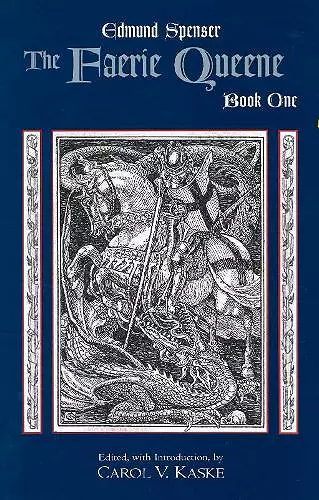The Faerie Queene, Book One
Edmund Spenser author Carol Kaske editor Abraham Stoll editor
Format:Paperback
Publisher:Hackett Publishing Co, Inc
Published:15th Mar '06
Currently unavailable, and unfortunately no date known when it will be back

Framed in Spenser's distinctive, opulent stanza and in some of the trappings of epic, Book One of Spenser's The Faerie Queene consists of a chivalric romance that has been made to a typical recipe--fierce warres and faithfull loves--but that has been Christianized in both overt and subtle ways. The physical and moral wanderings of the Redcrosse Knight dramatize his effort to find the proper proportion of human to divine contributions to salvation--a key issue between Protestants and Catholics. Fantastic elements like alien humans, humanoids, and monsters and their respective dwelling places are vividly described.
Two editions of Spenser are both from the same series, published by Hackett Publishing Company, which is providing inexpensive paperback volumes of The Faerie Queene, under the general editorship of Abraham Stoll. The volumes printed this year, books 1 and 5, are edited, respectively, by Carol V. Kaske and Stoll himself. A single volume combining books 3 and 4, edited by Dorothy Stephens, is forthcoming, as is book 6, edited by Andrew Hadfield. The volumes are attractively printed, with notes at the bottom of the page. Each volume includes an introduction, the Letter to Raleigh, a brief 'Life of Edmund Spenser,' textual notes, a glossary, an 'Index of Characters,' and a bibliography. Kaske's introduction to book 1 forms an accessible student guide, touching on a wide range of topics, from versification, genre, and allegory, to 'Spenser's Religious Milieu.' At the same time, there are fresh flashes of insight, no doubt derived from Kaske's long experience of teaching a complex poem. . . . Eschewing 'political and biographical allegory (p. xvi), the notes offer plenty of help to the student seeking to get behind the veil of Spenser's dark conceit, for they emphasize symbolism and historical context, especially literary context or 'sources.' Stoll's edition of book 5 of the Faerie Queene includes a judicious introduction of considerable merit. Not simply well written and learned, it partitions the information in an accessible and interesting way. Stoll is fully attuned to the recent controversies surrounding the Legend of Justice, but he does more than record them for the student reader; he manages to express sympathy for both poet and poem. Students need to hear the historical nature of Spenser's achievement for English literature, and Stoll leads nicely with this topic: book 5 is 'one of the most challenging meditations on justice in English literature' (p. ix). Stoll is as sensitive to the violence of book 5 as he is to its strangeness and beauty. Students will appreciate the short inventory of important works of criticism at the end of each section. The notes are not as full as Kaske's, but perhaps appropriately so. . . . I look forward to having access to the remaining volumes in this series. --Patrick Cheney, Studies in English Literature 1500-1900
ISBN: 9780872208070
Dimensions: unknown
Weight: 303g
256 pages